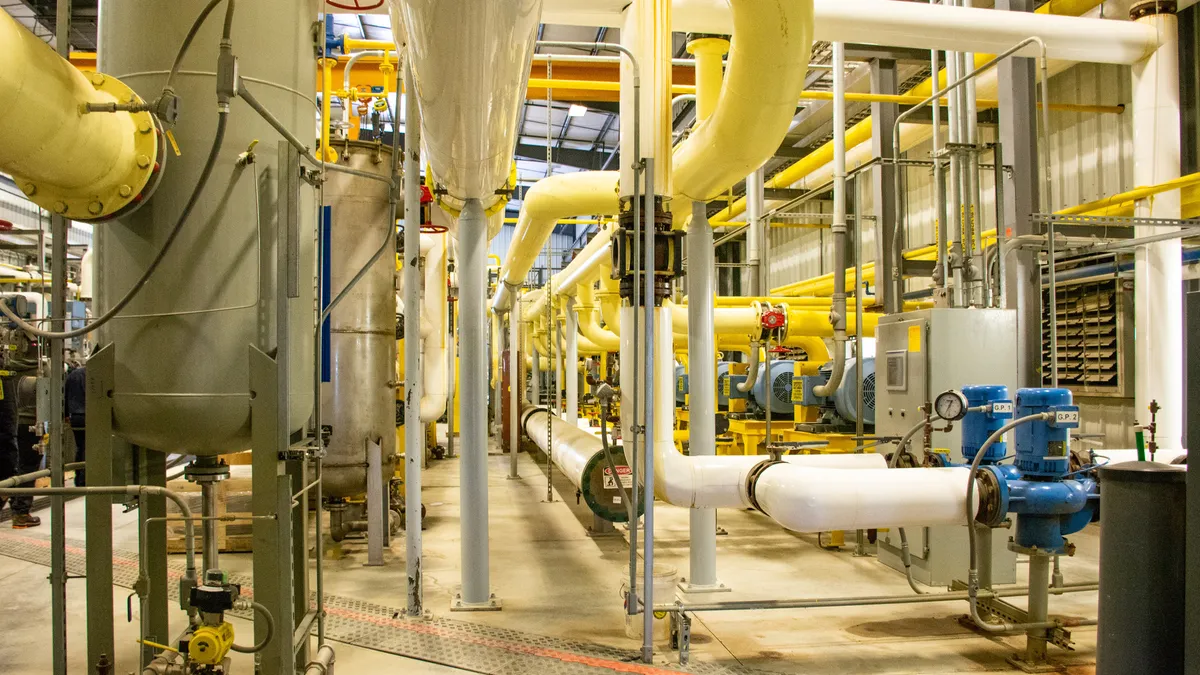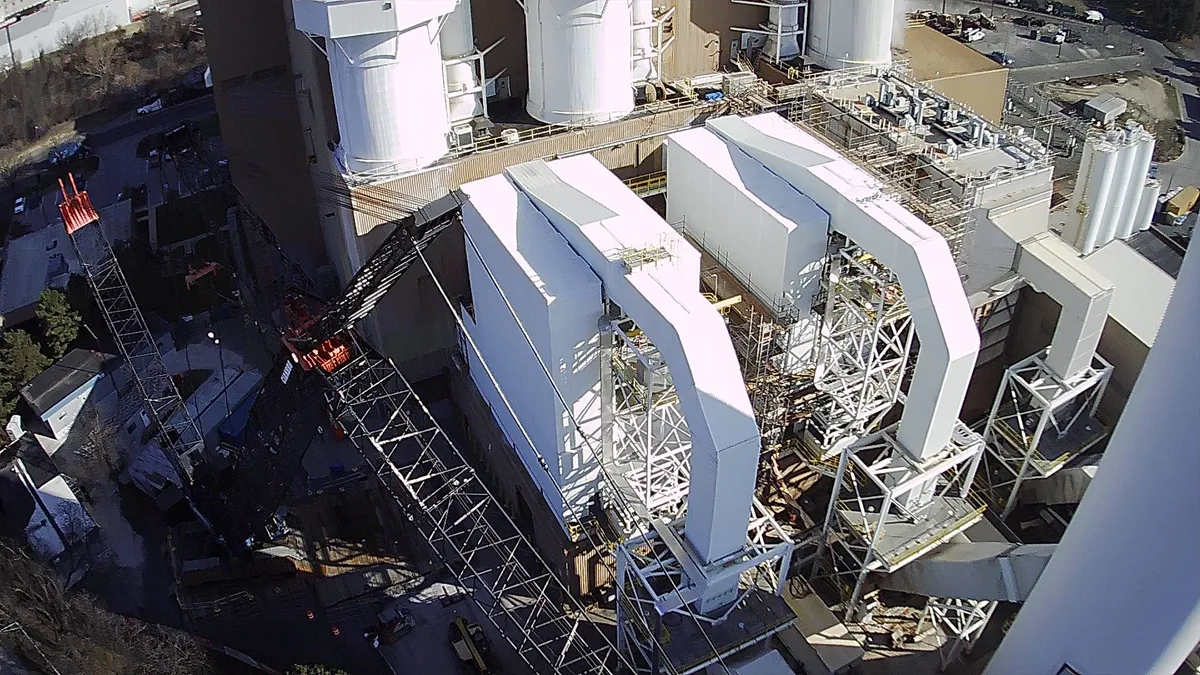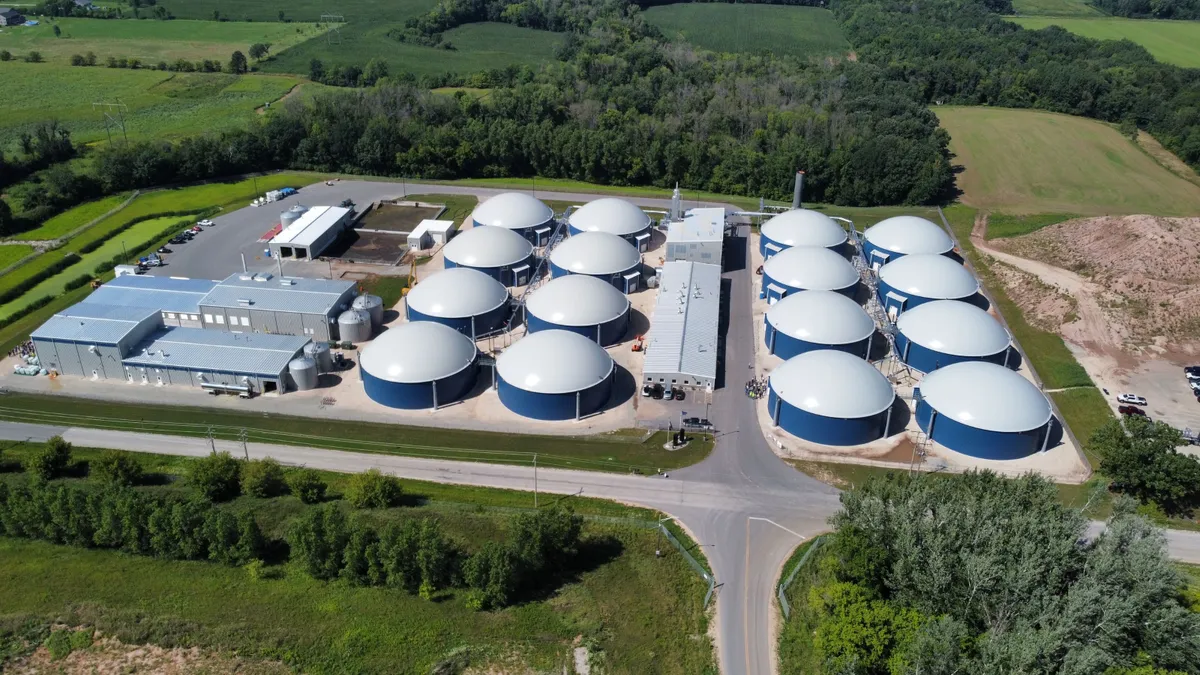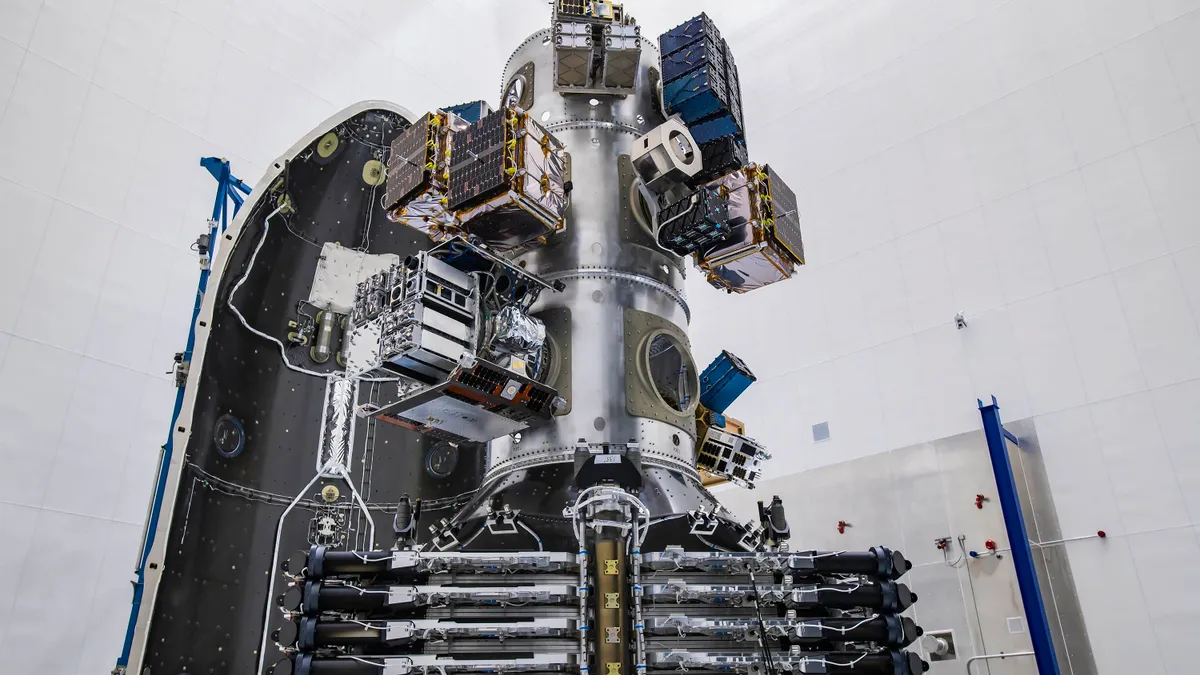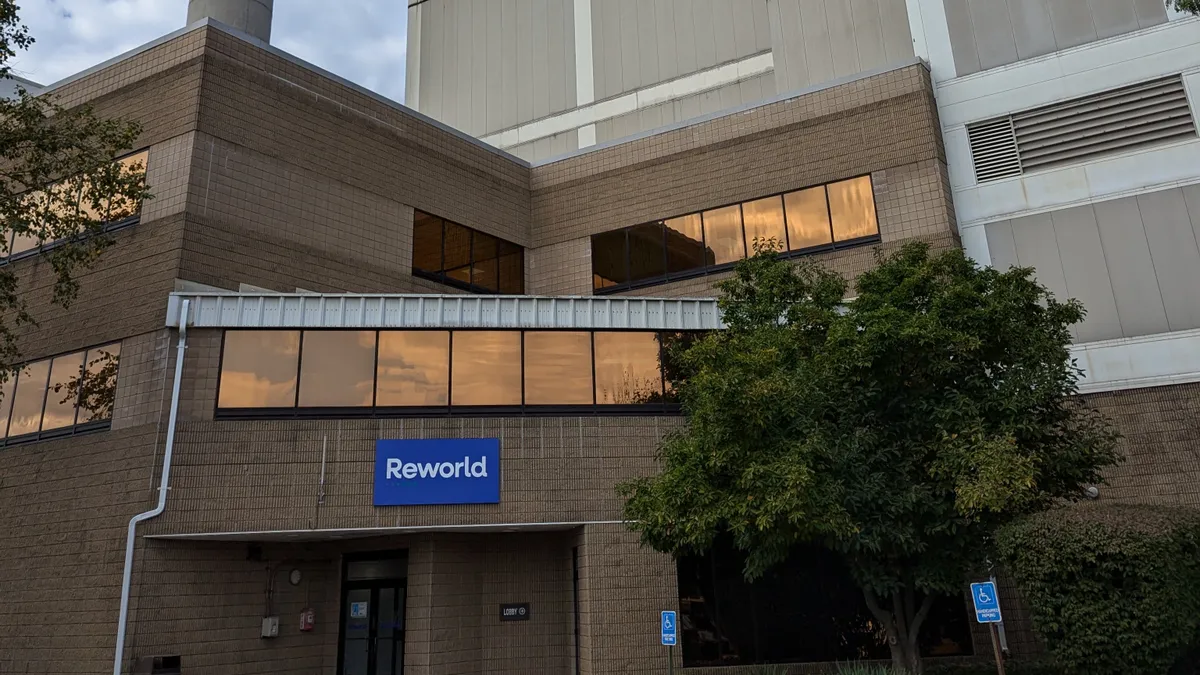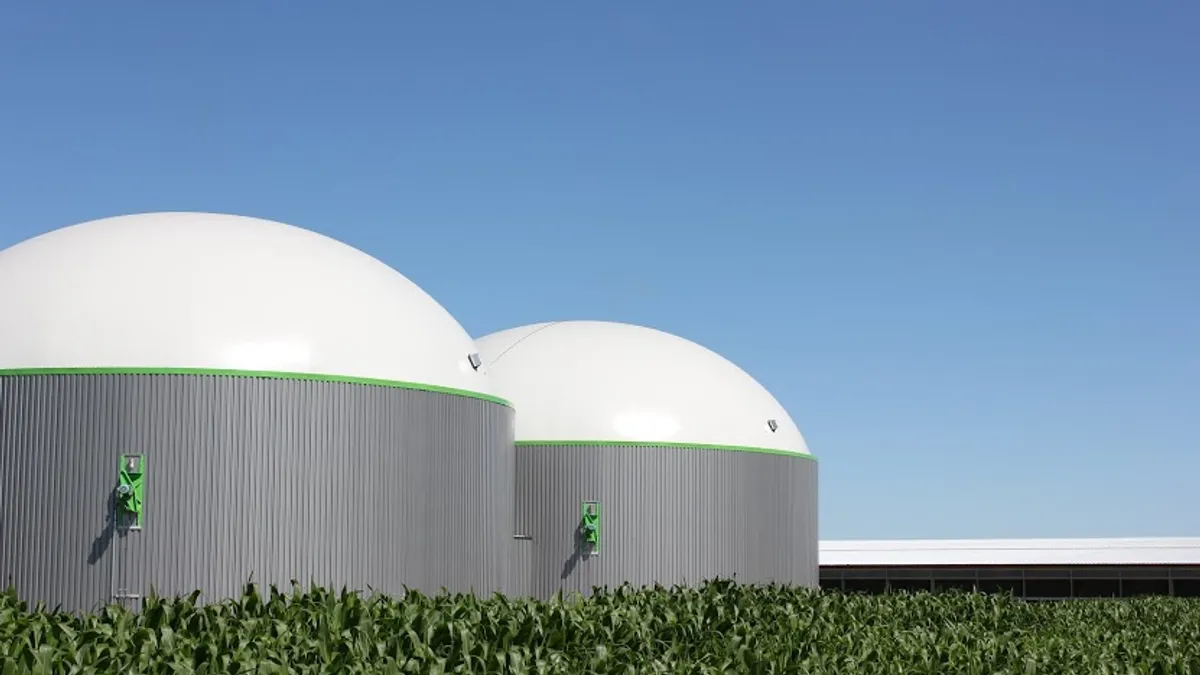The renewable natural gas industry expects 2024 to be an even bigger year for project starts and dealmaking, building on several market-defining events in 2023.
Last year, regulators and the private sector alike set the table for the industry’s growth over the next few years. The U.S. EPA finalized biogas production targets for multiple years of the Renewable Fuel Standard for the first time, and Vanguard Renewables struck the largest open market deal yet for RNG with AstraZeneca.
The renewable natural gas industry saw strong growth in 2023. More than 60 new projects came online last year in the U.S., bringing the total number to about 350, according to data collected by the American Biogas Council that excludes wastewater treatment plants. The group also estimates that biogas producers and developers invested about $1.8 billion in projects last year.
This year, they expect the market to grow anywhere from 10% to 40% in 2024, likely on the higher end of the spectrum, Patrick Serfass, executive director of ABC, said. That growth is in turn attracting major institutional capital. In December, Ares Management acquired municipal wastewater-to-RNG developer Burnham RNG, following in the footsteps of other private equity deals like the estimated $700 million deal BlackRock made to acquire Vanguard Renewables in 2022.
That strong financial backing can make a big difference, said John Hanselman, founder and chief strategy officer of anaerobic digestion company Vanguard Renewables. He said the company went back to the basics once its deal with BlackRock was finalized, improving the design of their digesters. Now, Hanselman said the backing of the world’s largest asset manager allows Vanguard to develop projects at “warp speed,” and gives the developer a much easier time pursuing voluntary offtake agreements for the RNG it produces.
He said the company is planning one construction start every other month for the first half of 2024 and will increase its pace to once a month by the summer.
“It’s going to be a crazy ride for the next five years,” Hanselman said.
The country’s largest RNG producer, Archaea, has also benefited from the backing of a much larger entity. After energy company BP acquired Archaea in December 2022, it positioned the developer as a driver of its pivot to bioenergy. After BP selected Starlee Sykes as CEO of Archaea last year, the company is now positioned to deliver 15 projects a year over the next few years.
In October, Archaea debuted its redesigned modular system at a Rumpke landfill. It now plans to roll out dozens more, including via its landfill-gas-to-RNG joint venture with Republic Services.
“We see [Archaea] as big leverage to help us transition from an international oil company to an integrated energy company,” Sykes said in an interview in January, referencing the company’s goal to scale bioenergy and eventually achieve $500 million in adjusted EBITDA across the business segment.
Deals like that are likely to continue, as landfill-gas-to-RNG projects in particular have relatively low production costs compared to other types of biogas but see strong demand, said Noah Kaye, senior research analyst at Oppenheimer & Co. He also expects some consolidation to occur among developers as RNG reflects other emerging industries and develops economies of scale. “It reflects the maturing of the industry,” Kaye said.
Even so, the year won’t be without its challenges. Despite ambitious goals for growth, permitting and supply chains remain difficult. The regulatory environment will also continue to provide both challenges and opportunities for developers, leading to what some anticipate will be a busy market for voluntary RNG offtake agreements in 2024.
Projects are navigating delays
While the biggest waste companies spent 2023 setting aggressive timelines for the rollout of landfill-gas-to-RNG facilities, they've run into challenges that have slowed their development.
Namely, state and local environmental permitting has been a challenge, Kaye said. He said project permitting can take anywhere from 12 to 24 months, and the industry is seeing anywhere from six to eight months of delays on projects as they wait for regulatory approval.
"I think it’s industry wide and pretty well known at this point," Kaye said.
In their third quarter earnings call, GFL Environmental executives noted some of the company's landfill gas projects were facing permitting and technical delays, pushing projects back three to six months.
WM also had to push back more than $200 million in planned capital expenditure spending in 2023 for sustainability projects, which include RNG. In its initial guidance, the company said it would spend $980 million on such projects over the course of the year, but with the delays it now expects to push back some of the heady profit projections it gave.
During the company's third quarter earnings call, WM executives said that construction and supply chain delays for RNG projects partially explained the change. The opening of the company's Fairless, Pennsylvania, RNG project, the largest in its portfolio, was pushed back "a couple of months" to the end of June due to such challenges, CEO Jim Fish said.
Nevertheless, waste companies don't plan to cancel any of that spending, instead pushing it into 2024 and later. WM executives said on their earnings call they still expect to complete their goal of building 20 RNG facilities by the end of 2026.
Serfass of ABC said some of the typical headwinds for getting projects online have begun to dissipate. Gas utilities in particular are "now much more encouraging of RNG interconnection" to meet their own sustainability goals, he said, as opposed to previous years when they saw RNG as competing with traditional natural gas.
Regulatory pressures
2023 was a tumultuous year for RNG regulations. The EPA finalized the Renewable Fuel Standard in June, but the timing of the announcement indirectly caused the price of cellulosic, or D3, Renewable Identification Number credits to pop up in price, according to S&P Global. That was good news for landfill operators, wastewater treatment plants and anaerobic digesters that sell the lucrative RINs, though it creates a difficult environment for the petroleum fuel producers who must buy the credits.
While RIN prices remain robust, a tax credit that industry experts expected to be a boon has proven trickier to pin down. Spurred by the Inflation Reduction Act, the Internal Revenue Service published a draft of the Section 48 Investment Tax Credit in November. The rule would allow eligible biogas projects, including landfill-gas-to-RNG, anaerobic digesters and others, to qualify for the credit. But the draft also excludes gas upgrading equipment, which is a key part of most biogas-to-RNG facilities today.
The issue has drawn consternation from members of the biogas industry, including BP, Vanguard and Burnham RNG, as well as the American Biogas Council and RNG Coalition.
Chris Tynan, founder and CEO of Burnham, said the proposed language wouldn’t change the decision to pursue individual projects on its own, but it does limit the financial returns his company is able to offer its municipal partners.
“There is additional value creation there that Congress intended that the IRS is potentially taking off the table. That’s unfortunate,” Tynan said.
The U.S. Department of Treasury, which oversees the IRS, scheduled a hearing to discuss the language for Feb. 20. Several industry voices are expected to weigh in on the language, urging the agency to change the language and allow all equipment in a typical biogas-to-RNG facility to be covered under the credit.
“It would be like if you had an ITC to construct a wind turbine but didn't include any of the cables to connect it to the grid,” Serfass said. “It just feels like a big miss by Treasury, and it needs to be corrected.”
The industry intends to be active in pursuing other federal policies as well. In November, a coalition of automakers and biogas groups formed the Partnership for Electric Pathways to push the EPA to adopt eRINs. The proposal, which stakeholders were hoping to see adopted in last year’s update to the Renewable Fuel Standard, would allow biogas producers to generate additional credits from electricity production to support the electric vehicle market.
“We need a new pathway for electric generation, using RNG from landfills, and eRINs would help us put that in place and would be valuable to the market in general and RNG as a whole,” Sykes, with BP, said.
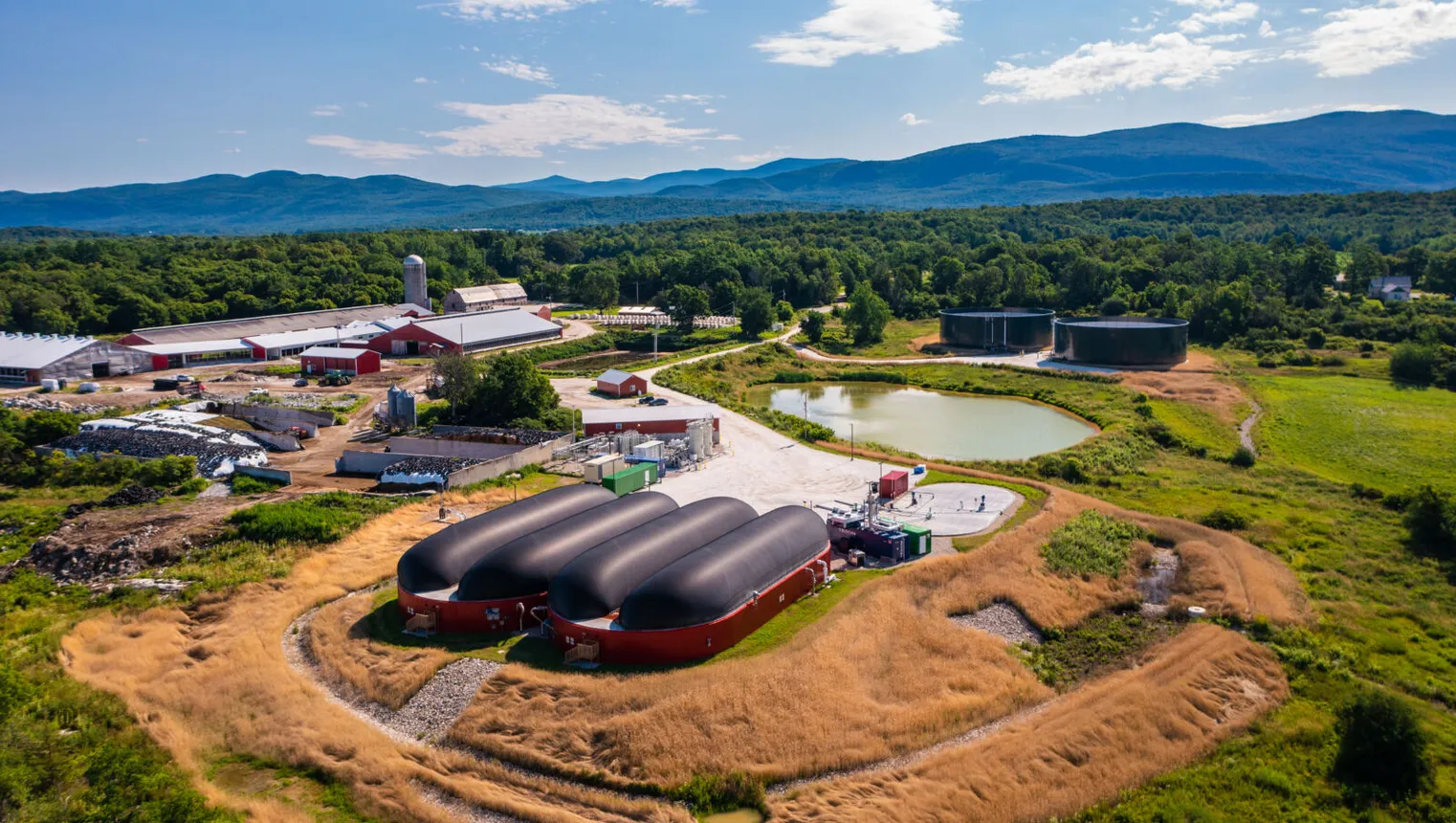
Voluntary versus compliance market
While tax credits and RINs have long supported the development of the RNG market, some industry insiders predict the market for voluntary offtake agreements is becoming a much greater driver of expansion. In recent years, Divert has announced a $175 million, 10-year offtake agreement with BP and Anaergia announced a long-term offtake agreement with Irving Oil.
Burnham RNG also secured a voluntary agreement for its Pasco, Washington, project. The facility, which Tynan expects to have completed construction by the end of the year, secured a 20-year offtake agreement with Cascade Energy.
Tynan said his company will continue to pursue projects that may sell RIN credits instead, but noted that some municipal partners shy away from the volatility of the credit markets.
”We love the voluntary market, [but] whether we choose to go into the voluntary market or the compliance market is a decision we make with our partners, so the municipality,” Tynan said.
Hanselman said the 650,000 annual mmBtu deal Vanguard made with AstraZeneca last year was a sign that the voluntary market “is on fire,” and he expects his company to be announcing several other deals in 2024. Part of the reason the voluntary market has grown, he said, is that investors view the compliance market for RINs and Low Carbon Fuel Standard credits as more volatile than a long-term offtake agreement, given that credit pricing can fluctuate from year to year.
Kaye said historically, most RNG has been sold into the transportation fuels market through credits, but the voluntary market is 440 times larger. He said the much larger voluntary market will likely overtake the transportation fuels market over the medium- to long-term, and said it “could account for almost two-thirds of total RNG consumption by 2040,” citing a recent analysis.
In 2024, the voluntary market is expected to grow in part due to increased commitments from energy producers looking to decarbonize. That notably includes utilities — Hanselman estimates 13 different gas utilities in North America are finalizing policies that would require them to secure RNG on the open market. Vanguard has experience with such deals, as its agreement with utility Vermont Gas in 2019 was the first to sell RNG to end customers.
“You see this all around the country because if you’re in the business of selling carbon, you really have to start decarbonizing quickly,” Hanselman said. “This year, next year and every year following, you see this hockey stick in demand, and I think it’s because of this stuff.”



